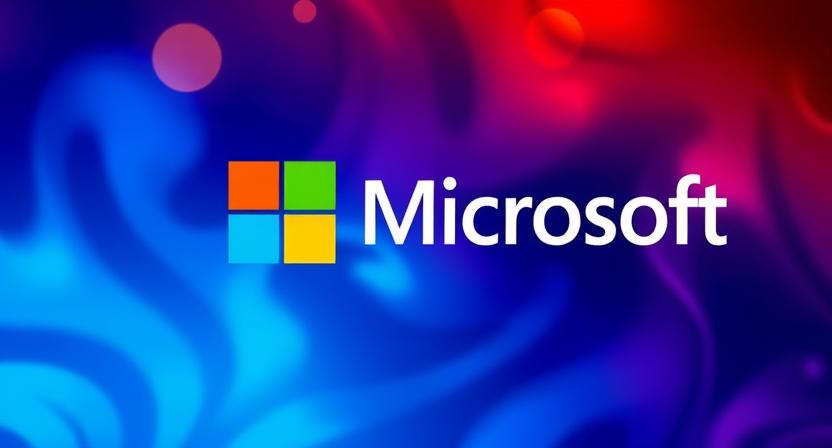Microsoft layoffs July 2025 hit headlines today. The company plans to cut roughly 9,000 jobs, or about 4% of its global workforce. These cuts follow earlier reductions of 6,000 jobs in May and 300 in June. Together, the 2025 layoffs total over 15,000 roles—around 6.7% of employees.
The move sparked concern about tech job security and the future of big tech.In this post, we explain the reasons behind these layoffs. We break down the numbers, affected teams, and official statements.
We also look at the impact on workers and the wider tech industry. Finally, we consider what this means for Microsoft’s future in AI and cloud services.

1. Overview of Microsoft Layoffs July 2025
Microsoft said today it will cut about 9,000 roles. The cuts affect nearly every division. Most jobs are in sales, marketing, gaming, product, engineering, and management.
The layoffs come after similar moves earlier this year. In January, about 1% of staff left. In May, 6,000 roles were cut. In June, 300 jobs were removed. Now, the total for 2025 tops 15,300 jobs.
These layoffs impact all major locations. Seattle, Redmond, Austin, and other offices will see staff decreases. Microsoft cites a shift toward AI and cloud services. The idea is to refocus resources on these key areas. The goal is to remove management layers and streamline teams. This helps the company stay more agile.
Total staff was about 228,000 before this round. So these cuts bring headcount down by roughly 4%. Microsoft remains profitable. Revenue and net income rose sharply last quarter. That shows the cuts are strategic, not a sign of financial distress.
2. Why Microsoft Is Laying Off Workers
Several key factors drove the Microsoft layoffs July 2025 decision.
AI and Cloud Investment
Microsoft is pouring money into AI and cloud. New services like Copilot, Azure AI, and OpenAI work drive demand. To pay for that, the company needs funds. That means shifting investment from older areas to AI.
Streamlining Operations
Microsoft wants to remove management layers. That is meant to speed decision-making. It also helps cut costs. Fewer managers mean more budget for product teams and new services.
Market Priorities
Customer demand now leans toward AI-powered tools, cloud services, and security. Sales and marketing roles tied to older products may no longer fit the path forward. So these roles are trimmed.
Cost Efficiency
Even with strong profits, Microsoft aims for efficiency. Reducing staff while keeping margins healthy is one way to do that. CFO Amy Hood noted that trimming teams can help reduce costs.
Past Overhiring
During the hiring boom of 2020–2022, many new roles were added. Some were no longer needed. Microsoft now is correcting that imbalance with cuts.
Tech-Wide Trend
Many tech giants cut jobs recently. Amazon, Meta, and Google also did. The reason is similar: redirect funds to AI, cloud, and efficiency.
The Microsoft layoffs July 2025 reflect this shift. The company is choosing specific roles to cut while funding growth areas.
3. Departments and Roles Affected
The cuts impact multiple divisions:
Sales and Marketing
This is the largest group affected. Many roles in product marketing, field sales, and account management will go. Microsoft is focusing on fewer but stronger marketing teams.
Gaming (Xbox, King, ZeniMax)
About 10% of staff at King are laid off, around 200 people. Project cuts, like those on Everwild, were also mentioned by Xbox execs. Phil Spencer said the focus will shift to high-priority games.
Engineering and Product Teams
Some teams behind older or less successful features were cut. No exact numbers were shared yet. Product fields tied to legacy work may see the biggest hit.
Management Roles
Various office locations are cutting manager-level positions. The goal is to slim down the chain of command and let teams move faster.
Other Areas
Support, HR, finance, and back-end staff are included too. This suggests the cuts are broad—not limited to one area.
This shows the layoffs hit across the board. But they target roles tied to legacy products. Teams working on AI, cloud, Azure, and OpenAI are less affected. The shift is toward future growth.
4. What Microsoft Said
Microsoft gave statements on the layoffs.
A spokesperson said the cuts aim to “put the company and teams in the best position for success in a dynamic marketplace.” They pointed to a need for “organizational changes.”
CFO Amy Hood said earlier that the company needs “high-performing teams” and to “increase agility by reducing layers.” She framed this as making room for new investment.
Xbox head Phil Spencer spoke on gaming layoffs. He said the team is focusing on “strategic growth areas” and pulling back from less critical projects like Everwild.
In other memos, the company said affected employees will receive severance pay, continued health care, and job support. This includes career help and LinkedIn learning credits.
Microsoft emphasized that the company remains strong. It added that AI and cloud are top priorities now. These changes shape the company’s future.
5. Financial Context
Despite the layoffs, Microsoft remains financially strong.
In its latest earnings report, the firm posted $70 billion in revenue and $26 billion in net income.
These numbers beat most analyst forecasts. Microsoft’s stock has risen around 17% in 2025 so far. The market seems to view the layoffs as a long-term strategic move. Investors are reassured by the company’s shifts toward AI and cloud.
The firm isn’t alone in reducing staff while staying profitable. Other tech leaders, such as Apple, Amazon, and Meta, are doing similar things. The trend reflects how big tech is reshaping itself.
Cutting jobs while investing in new areas can boost margins. If AI succeeds, it may create more revenue than the lost roles cost.
Still, the challenge is to retain key talent while cutting costs. Doing both well is tough—but essential for future growth.
6. Impact on Employees
Severance and Support
Microsoft says all laid-off workers will receive severance. This includes pay based on tenure and months of coverage for healthcare.
Career Help
Affected staff will get help with job placement. This includes LinkedIn learning credits and career counseling.
Local and Remote Mix
Some offices may shrink staff unevenly. Remote and hybrid roles may shift to on-site or vice versa depending on the division.
Morale and Culture
Layoffs can hurt morale. Teams may feel uncertain. Some may see a rise in workload. Microsoft has pledged to offer internal communication and support to ease the transition.
External Reaction
Employees and ex-staff took to LinkedIn and Twitter. Many thanks, teammates and shared career stories. Some praised Microsoft’s support. Others said the timing was rough.
Legal and Union Response
There have been no union-led protests. No lawsuits have surfaced yet. But some workers are watching legal options as other companies have seen similar moves.
7. Tech Industry Trends
Microsoft’s move fits a broader tech pattern.
Big Tech Layoffs
Amazon, Google, Meta, and Apple also cut jobs. Many of these were made after high hiring during 2020–2022. Now, companies reprioritize spending.
AI Investment Wave
AI is driving new investments. Firms look to hire expert staff here. But that means cuts in older teams.
Cost Efficiency Focus
Post-pandemic, remote work led to new costs. Now firms want to tighten budgets and get leaner.
Future Skills Shift
Hiring will focus on AI, ML, cloud computing, and data science. General IT and support roles may decline.
AI Job Debate
Some fear AI will replace roles. Others believe it will create new ones. It’s still early to know the long-term effects.
Microsoft’s decision mirrors industry trends. It shows a move from broad staffing to focused, outcome-driven teams.
8. Microsoft’s Future
These cuts may set Microsoft on a new path.
AI and Cloud Focus
More funds are moving to Azure, OpenAI partnership, Copilot, and cloud services.
Resilience and Speed
Fewer managers should help the company move quicker. That may help Microsoft beat rivals.
Hiring for Growth Areas
We will likely see hiring in AI, cloud, and cybersecurity.
Keeping Talent
The big challenge is keeping skilled staff. Some might quit out of uncertainty. That could slow progress in key tech.
Investor View
Investors seem to support the shift. But long-term performance will depend on AI revenue and cost control.
9. Final Thoughts
Microsoft layoffs in July 2025 mark a big shift in big tech. The company is cutting 9,000 jobs to fund its AI future. The action is part of a larger trend of pivoting from past priorities.
The cuts touched many divisions but avoided the AI and cloud core. That shows Microsoft’s clear vision for its next chapter. Worker support measures help, but the human toll is real.
Investors responded well. The firm remains strong and profitable. If the AI and cloud bets pay off, the cuts may make sense. If not, the company could lose more than it gains.
For employees, the time to stay alert is now. Skills in AI, cloud, and data will matter most. For other workers, the future may bring new paths.
For tech watchers, the layoffs show what’s coming next: tighter teams, smarter hire choices, and major bets on AI.
This news is not the end. It is a new start. Microsoft layoffs July 2025 will shape the next era of tech.





